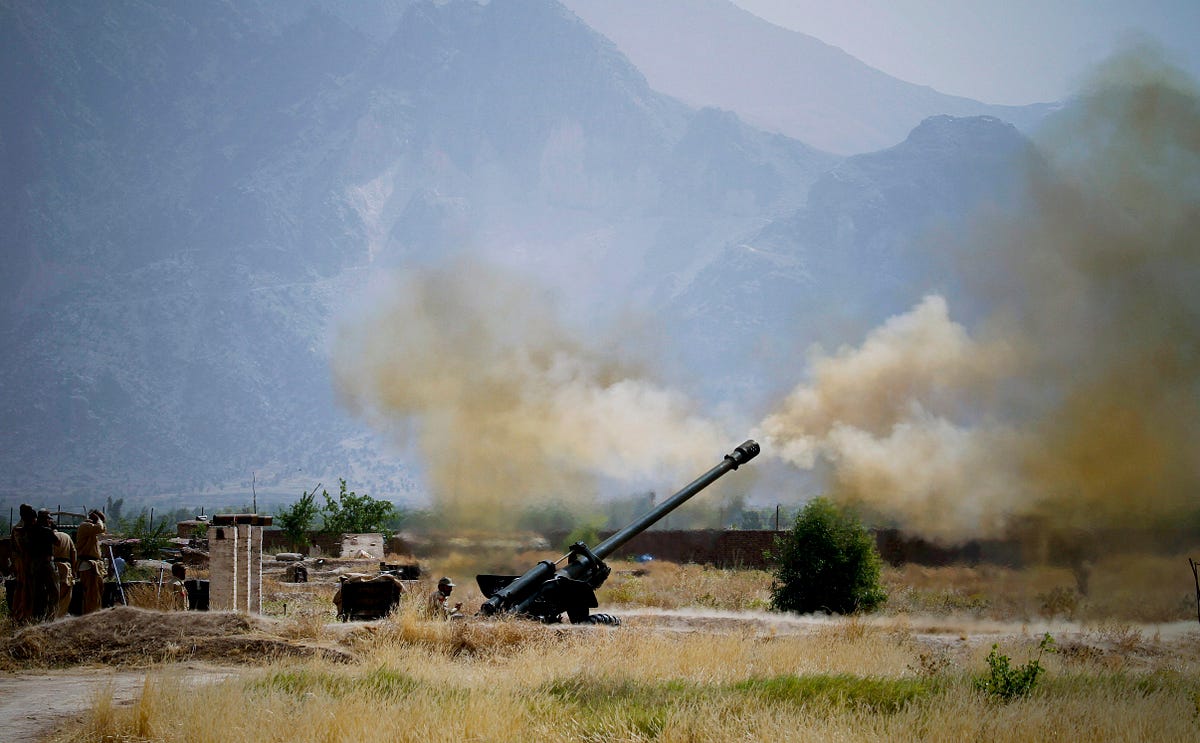Published in War Is Boring
Just a few years ago, the Taliban was one of the two prime Islamist militant groups—the other being Al Qaida-aligned insurgents in Iraq—for foreign fighters around the world to enlist with. But with the self-proclaimed Islamic State on the warpath and new conflicts in North Africa, the Taliban has become less attractive.
Specifically, the Pakistani Taliban. That’s the subject of a new report inCTC Sentinel, West Point’s counter-terrorism newsletter.
As of July 2008, the Pakistani Taliban included around 8,000 foreign fighters, notes Raza Khan, a political analyst who authored the report. These fighters came from western Europe, the Middle East, China, Russia, India, and central Asian countries, particularly Uzbekistan. But today, only a few hundred remain.
There are several reasons for the decline. For one, American drone strikes have killed thousands of people in Afghanistan and Pakistan. It’s a powerful disincentive for potential recruits.
Then in June, the Pakistani military launched Operation Zarb E Azb—sending 30,000 army troops into the province of North Waziristan aimed at routing out the militants based there. So far the operation has inflicted heavy casualties on Taliban fighters—about 500 dead.
“They must either relocate to other parts of [the Federally Administered Tribal Areas], scatter across Pakistan, shift to Afghanistan, return to their countries of origin, or fight to the death,” Khan writes.
None of these options are very good for the Taliban.
 Pakistani artillery shells North Waziristan in June 2011. AP/Anjum Naveed photo. Top: Taliban militants in South Waziristan in August 2012. AP/Ishtiaq Mahsud photo
Pakistani artillery shells North Waziristan in June 2011. AP/Anjum Naveed photo. Top: Taliban militants in South Waziristan in August 2012. AP/Ishtiaq Mahsud photo
For foreign fighters originating from Russia, China and Egypt, returning comes with greater risk than militants from western Europe. While returning from Pakistan to a country like the United Kingdom or United States comes with its own risks, such as imprisonment, returning to China risks execution. The fighters also face a considerably higher risk of being tortured by Russian, Chinese or Egyptian jailers.
There’s the option of scattering across Pakistan, Khan notes. But this would disrupt the various Taliban organizations’ ability to plan a war, while leaving them vulnerable to capture. That leaves fighting to the death or hopping across the border to Afghanistan.
The latter appears to be happening, at least in part. Khan details a split this summer within the Pakistani Taliban into two factions. One faction led by militant Khalid Mehsud is based in South Waziristan. The other faction led by Maulana “Radio Mullah” Fazlullah is now based in Afghanistan, and he “seems to focus all of his attacks on Pakistan,” Khan writes.
Meanwhile, the Pakistan-based Haqqani network is still launching attacks on U.S. forces. The disarray and confusion among the different groups is contributing to foreign fighters abandoning the conflict.
It’s also unclear what will happen next, or how this will effect Afghanistan in the coming years. The militants are no doubt taking advantage of the declining U.S. troop presence in Afghanistan as Pakistani troops press towards the FATA, and the Taliban could seek to heighten the war once most U.S. troops withdraw later this year.
But if Pakistani troops keep driving Taliban fighters across the border, the jihad-minded Haqqani insurgents could use Afghanistan as a safe haven to strike back in revenge at Islamabad.
But there’s also another—unmentioned—option for the foreign fighters.
That’s to head to Syria and Iraq to wage jihad with the Islamic State. Some of them are indeed doing this. “Syria is a natural destination for fleeing Al Qaida and associated group militants,” political analyst Imran Wazir told CTC Sentinel. “As Operation Zarb E Azb has made conditions worse, which were already extremely difficult due to U.S. drone attacks.”
Of course, the U.S. is back at war in Iraq. Now taking bets on when the drone strikes expand to include Syria.
No comments:
Post a Comment